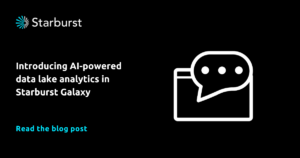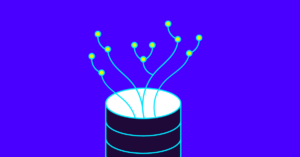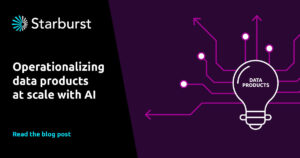What is the difference between AI ML and data analytics?
Data analytics and AI analytics are both quantitatively and qualitatively different. Replacing the traditional work of data analysts with AI and machine learning algorithms lets companies leverage the cloud’s scale and performance. At the same time, these AI analytics tools can generate actionable insights that business analytics could never discover. Here are some of the differences between conventional data analysis and AI approaches.
Performance
Once set up, artificial intelligence techniques and machine learning models get their jobs done faster than human analysts. People take time to:
- Identify the business question.
- Scope out a project.
- Discover, cleanse, and process data.
- Produce results.
This time-consuming analysis workflow may take hours, days, or months to complete. By comparison, AI analytics automates these workflows and leverages cloud computing to complete its tasks in minutes.
Data volume
For the same reason, AI analytics can handle significantly larger volumes of data. Business analytics solutions, especially spreadsheets and other standalone apps, can only process datasets up to a certain size. AI analytics platforms can automatically scale cloud storage to accommodate petabyte-scale data processing requirements.
Data variety
AI models are better able to handle a variety of enterprise data. Business intelligence analysts generally work with structured data organized in clearly labeled rows and columns. However, enterprise data has become significantly more diverse. Real-time web metrics, social media activity, and other unstructured data contain valuable insights that standard software cannot reach. AI techniques like natural language processing (NLP), neural networks, and deep learning can process structured and unstructured data alike.
Accuracy
Machine learning models can be more accurate than human analysts. As a project becomes more complex, it creates more opportunities for human error as analysts transcribe, convert, and modify their datasets. Software automates these routine tasks, executing them consistently and accurately at scale. Moreover, taking the core analytical tasks out of human hands significantly reduces the chance that cognitive biases could influence the final result.
Insight quality
Implementing AI data analytics can yield more profound insights, resulting in better decisions, more innovations, and an overall more decisive competitive advantage. At its heart, analytics is about pattern recognition — using statistical tools to identify trends, recurring behavior, and other aspects of the data that can help predict the future. Even with statistical tools, people can only juggle a few variables at a time. On the other hand, AI and machine learning can evaluate potential relationships between hundreds or thousands of variables all at once to produce previously-undiscoverable conclusions that drive more impactful data-driven decisions.
What are the potential benefits of AI-driven analytics?
Delivering richer insights based on larger datasets gives AI-driven analytics an advantage over traditional data analysis. In turn, these advantages translate into significant business benefits.
Agility
Fast AI analytics makes decision-makers more responsive to dynamic market conditions. These advancements realize the promise of predictive analytics so executives can make proactive decisions rather than reacting to events after the fact.
Productivity
AI automation makes a company’s analysts more productive by eliminating the routine tasks that consume their workdays. Rather than wasting hours cleaning their data sources, analysts can focus on translating business needs into project requirements and communicating their results.
Innovation
AI data analytics’ deeper insights help companies develop more innovative products and processes. Product teams can anticipate market reactions to design decisions or identify opportunities to improve their product’s performance.
Customer engagement
Unlike human analysts, AI data analytics can operate in real-time to influence customer behavior and drive sales. AI-driven insights make marketing campaigns more effective, increasing click-throughs and conversions. E-commerce automations enhance the customer experience to improve metrics like shopping cart abandonment rates.
Why is data analytics important in AI?
While the previous discussion may sound like these new AI advancements make data analytics obsolete, that is far from the case. Data analysis is essential to effective AI and machine learning practices. Amid all the hype over AI, it’s easy to miss some fundamental truths:
- Machines don’t learn.
- Code isn’t intelligent.
- Garbage in, garbage out.
As powerful as these algorithms can be, they don’t “know” anything and will produce an inaccurate result as convincingly as an accurate result. The hallucinations produced by generative AI systems like ChatGPT or the chatbots that go insane result from faults or weaknesses in their platforms’ underlying models.
For example, advanced AI algorithms are essentially black boxes. How they process data is so opaque that their creators cannot explain how inputs lead to outputs. That makes these systems extremely sensitive to the quality of their training data. Inaccurate or biased datasets will encode patterns that shouldn’t exist and affect the model’s results. Data scientists developing new algorithms must apply their traditional data analysis techniques to understand the nature and quality of their datasets. As a result, the EU recently proposed the Artificial Intelligence Act (AI Act).
Competitive advantage and use cases
With the right training, AI analytics platforms create competitive advantages that can give companies the edge they need to win new business and drive efficiencies. These use cases show how this powerful technique can push companies ahead of the competition.
Consumer demand forecasting
In the past, retailers and e-commerce companies drove their businesses by looking in the rear-view mirror. Analysts would use statistics to evaluate historical sales data and apply the resulting trends and patterns to their forecasts. At a high level, this works. Data analysis will reveal seasonal and geographic patterns like when a hardware retailer’s space heater sales pick up in its Florida stores versus its Michigan stores.
All the same, traditional analytics is a blunt tool because the past is an imperfect guide to future sales. A better approach is to forecast consumer demand, but consumer behavior is notoriously complex. AI data analytics can handle this complexity, processing hundreds of variables simultaneously to create forecasts for thousands of products in hundreds of stores.
AI-powered forecasts of consumer demand ensure the retailer knows when and where people will be ready to buy so they can stock products in quantities to meet that demand. Besides driving sales, this knowledge will improve operational KPIs like inventory turns and in-stock percentages.
Healthcare compliance
AI optimization can significantly improve the healthcare industry’s compliance with data privacy regulations. The healthcare system is a convoluted network of independent physicians, corporate clinics, laboratories, insurers, pharmacies, and service providers. Patient data must flow through this system to produce positive health outcomes — and get everyone paid. However, patient medical records are highly sensitive and protected by regulations. Compliance failures can result in significant financial penalties.
AI algorithms can analyze traffic patterns to spot emerging compliance risks. Anomaly detection dashboards will notify governance teams, giving them time to address issues before they become compliance incidents.
Can I use ChatGPT to analyze data?
Starburst’s engineering team has evaluated ChatGPT’s potential usefulness in analytics. These tools are more than just hype. In the right context, they can produce amazing results. These language models are excellent at parsing a prompt’s syntax and generating the correct text response. Searches for data based on tags and other metadata could return results much faster.
However, whether these tools work depends heavily on the model’s training sets. For example, ChatGPT’s training set includes a vast amount of open-source code. You could prompt it for Python code to create a Trino query, and it will probably give you the right answer faster than you could look it up on GitHub.
However, ChatGPT knows nothing about your company’s data. You might get an answer, but you could spend more time checking its accuracy and completeness than it would take to use traditional tools.
On top of that, third-party language models may never get access to your company’s data if vendors cannot address security, privacy, and compliance concerns.
Will AI replace a data engineer?
AI analytics can replace humans for many routine, repetitive tasks. But that does not mean “productivity improvements” will translate into data team layoffs. The data engineering field faces many possible futures, but AI may not be as much of a threat as an opportunity.
Data teams are already hard-pressed to meet competing demands on their schedules, so anything that frees engineers from mundane tasks to support decision-makers only enhances their value.
In addition, AI data analytics can produce better results faster, so engineers will be making more impactful contributions to business decisions, enhancing their value even further.
How an open data lakehouse architecture supports AI & ML
AI and ML projects require high-performance systems that can query and process enormous volumes of data that scientists have structured to enhance pattern recognition.
Commonly, data warehouses provided the platforms data scientists used to build their AI/ML algorithms. A warehouse’s structured architecture delivered fast queries and provided the required compute performance. However, data warehouses haven’t kept up. Increasingly, enterprise AI/ML depends on unstructured data that warehouses can’t handle. Moreover, data warehouses become expensive as these projects reach petabyte scales.
Data lakes are partial solutions. By separating storage from compute, companies can take advantage of commodity object storage that scales affordably. However, data lakes lack a warehouse’s robust data management and analytics capabilities.
One solution is maintaining raw data in a data lake from which ETL pipelines can pull to feed an AI/ML project’s warehouse. However, this approach adds complexity, cost, and management overhead.
Data lakehouse architectures combine the performance and analytics capabilities of a warehouse with the flexibility, scalability, and affordability of a lake. Starburst’s data lakehouse platform leverages the commodity object storage benefits of services like S3 or Blob Storage to create a single point of access to a company’s structured, semi-structured, and unstructured data. Built on Trino’s open-source SQL query engine, Starburst lets data scientists explore data sets independently and program SQL statements to accelerate AI/ML project development with better results.








